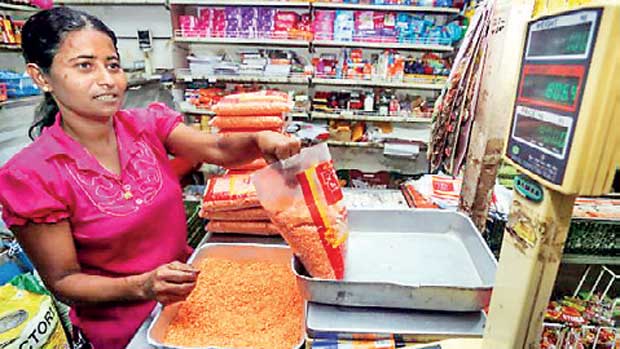19 Jan 2018 - {{hitsCtrl.values.hits}}

 The most effective development projects are those that not only provide new solutions to old problems, but are also implemented in a way that is sufficiently flexible to accommodate changing circumstances.
The most effective development projects are those that not only provide new solutions to old problems, but are also implemented in a way that is sufficiently flexible to accommodate changing circumstances.
This became clear to us in 2015, when the Asian Development Bank (ADB) and Government of Sri Lanka began discussions on a line of credit for small and medium-sized enterprises (SMEs).
We were initially hesitant but our reluctance did not stem from a lack of urgency. The World Bank’s Enterprise Survey found that 30 percent of Sri Lankan firms identified access to finance as a major constraint, a percentage surpassed only by Mongolia, Nepal and Afghanistan among ADB’s developing member countries. Only in Tonga are firms more reliant on internal funding for new investments. Also, just 25 percent of Sri Lankan firms said that they did not need a loan, the lowest percentage among ADB developing member countries.
We were concerned, rather, that the partnering banks would not draw down the credit line. In 2008, ADB originated a credit line for SMEs in Sri Lanka, but it struggled to disburse. Another development partner encountered similar difficulties with a 2011 project.
If banks do not draw the development funds, the SMEs are no better off.
Based on feedback from the banks, we concluded that the problem had been the high cost of our funds. Although the funds are lent to banks at a market rate, they include transaction costs.
Social safeguard monitoring, additional reporting and requirements to lend to riskier borrowers such as SMEs led by women, first time borrowers or located outside of Colombo, render ADB lending effectively more expensive than alternatives.
To address the problem, ADB designed an auction. Cognizant of the additional monitoring, reporting and targeted lending requirements, banks could price how much the ADB loan was worth to them.
Two auctions
In effect, the auction would create a market rate for a very specific type of wholesale lending. To hold auction winners accountable if they failed to meet disbursement and development targets, sharp financial penalties and bans on participating in future auctions would be imposed.
ADB and the government agreed to conduct two auctions and then decide on the pilot’s continuation. Although we were satisfied with the auctions’ performance overall, the government raised concerns that a handful of banks would dominate the auction. This, in turn, might limit the reach of the credit line given the geographical dispersion of branches and other considerations.
There was an agreement to discontinue the auction, but the penalties for poor performance were retained. Instead of an auction, all the participating banks could request funding semi-annually.
Following the changes, the project continued to perform well. The development targets were increased, the disbursement schedule was accelerated and the government requested additional financing to extend the project.
Two lessons can be drawn from this experience.
First, credit lines should be designed with a nod toward the credit cycle. ADB originated its 2008 credit line when loan growth was contracting. In such conditions, the objective should just be to keep credit flowing.
In contrast, the 2016 credit line came during a period of strong expansion of the economy. When banks are already eager to lend, there is an opportunity to push them toward loans that they might not normally make. The latter credit line’s focus on SMEs led by women, first time borrowers or located outside of Colombo was even more appropriate.
Second, despite a consensus that other projects had struggled because of transaction costs added to a market rate, the real problem might have been incentives. If the cost of not drawing a credit line is the extension of the credit line, the downside is limited. If the consequences are financial penalties and effective ceding of the available funds to their competitors, the downside is real.
(Donald Lambert is Principal Finance Specialist, South Asia Department, ADB)
10 Jan 2025 28 minute ago
10 Jan 2025 2 hours ago
10 Jan 2025 2 hours ago
10 Jan 2025 4 hours ago
10 Jan 2025 4 hours ago